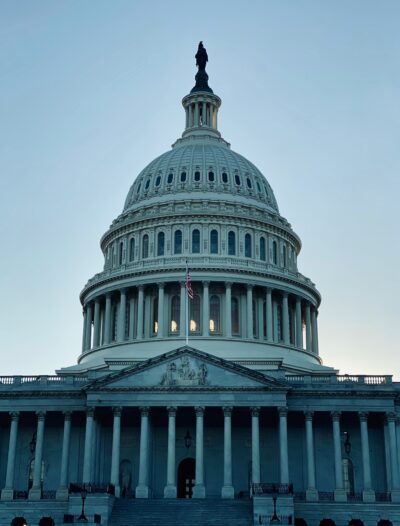The budget reconciliation bill that Congress passed on July 3, 2025, includes Workforce Pell legislation, a longstanding priority for Jobs for the Future (JFF) that would expand Pell Grant eligibility to learners and workers who want to pursue a short-term job training program. The Workforce Pell portion, which will go into effect on July 1, 2026, includes a number of metrics and provisions that were part of other bipartisan versions introduced in recent years. Below, we tackle key questions and preview what to expect from this Pell grant expansion:
Why Does Workforce Pell Matter?
- Before this bill passed, Pell Grants—the main form of federal grant aid for students with low incomes—could only be used for programs that are at least 600 clock hours and 15 weeks long. That means many high-quality, short-term training programs—often designed to quickly prepare students for in-demand jobs—aren’t eligible. As a result, students who want to pursue those paths often receive no federal financial aid. Workforce Pell changes that. It opens up Pell Grants to students enrolling in shorter-term, career-focused programs. These could be in health care, IT, skilled trades, or other growing fields where employers need trained talent now—and where students can often earn a credential in weeks, not years.
- Some students enrolled in shorter-term programs have had grants available to them through the state or the Workforce Innovation and Opportunity Act (WIOA). But that aid is not universally accessible, leaving many students with an affordability gap; this expansion addresses that and can expand access.
How Much Can Students Expect To Receive?
- While the current Pell Grant maximum is $7,395, aid available to students under Workforce Pell will be prorated based on the number of clock hours, credits, or weeks. Workforce Pell Grants will be less than the maximum grant.
Which Students Will Be Eligible?
- Student eligibility will be similar to the existing Pell Grant program. Students will have to fill out a FAFSA and eligibility will be tied to income. Typically, students who have a bachelor’s degree are not eligible for a Pell Grant; however, Workforce Pell students who have obtained a baccalaureate degree (but not a graduate credential) are eligible for Workforce Pell.
What Types of Education and Training Providers Will Be Eligible?
- The education and training providers eligible for Workforce Pell are the same as those currently eligible for Pell Grants: Institutions of higher education that are accredited and able to receive Title IV under the Higher Education Act.
What Types of Programs May Be Eligible?
- Programs must be between 150 and 599 clock hours and between 8 and 15 weeks. While noncredit programs are not specifically excluded, it will be up to the U.S. Department of Education to decide whether those programs can demonstrate some type of equivalency to meet eligibility.
- States, either via the governor or state workforce board, will play a significant role in assessing program eligibility using the following metrics: The program prepares students for high-skill, high-wage, or in-demand industry sectors or occupations;
- The program meets the hiring requirements of employers;
- The program leads to a recognized postsecondary credential that is stackable and portable, unless the program prepares a student for employment in an occupation where there is only one recognized postsecondary credential;
- The program provides credit that articulates to one or more additional certificates or degree programs.
- The U.S. Secretary of Education will also have a role in ensuring that the program:
- Has been offered by the institution for at least one year prior to receiving eligibility;
- Has a verified completion rate of at least 70%, within 150% of normal time for completion;
- Has a verified job placement rate of 70%, measured at 180 days of program completion;
- Meets an earnings requirement that looks at program cost, median earnings, and the federal poverty level. Specifically, the program must have median value-added earnings that exceed the median total price charged to students. Median value-added earnings are calculated by taking the annual earnings (adjusted for state, regional, and local areas) of a student who received aid and completed their program three years prior and subtracting 150% of the poverty line.
What Type of Data Will Be Required From Institutions?
- Institutions will have to provide necessary data to the state and U.S. Department of Education to prove that they meet the programmatic eligibility standards required under law. However, presently, there are no additional data reporting elements. The U.S. Department of Education may seek to require additional data as Workforce Pell is implemented.
What’s Next?
- Workforce Pell is slated to be implemented by July 1, 2026, for the 2026-2027 academic year. This is an aggressive timeline. It is possible that the Department of Education may not be able to take all the steps necessary for implementation in less than a year.
- The Department of Education will likely hold negotiated rulemaking on further specifics and implementation of Workforce Pell. If they proceed with negotiated rulemaking, the Department will seek nominations for negotiators and set up a system where stakeholders can provide input on key topics. These may include:
- Refining definitions in statute (e.g., how can states determine whether a program meets the needs of employers)
- Identifying appropriate data sources
- Creating a system for institutions to apply for programmatic approval
The Department will also likely issue guidance closer to the implementation date and may offer webinars for institutions. Subscribe to JFF Policy & Advocacy updates for insight and analysis.




